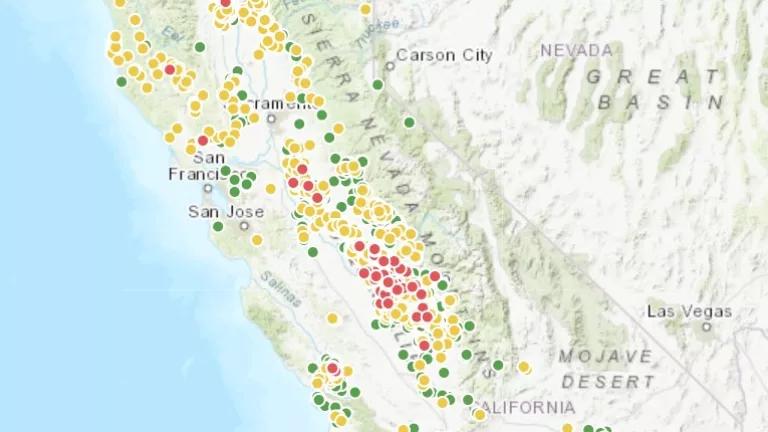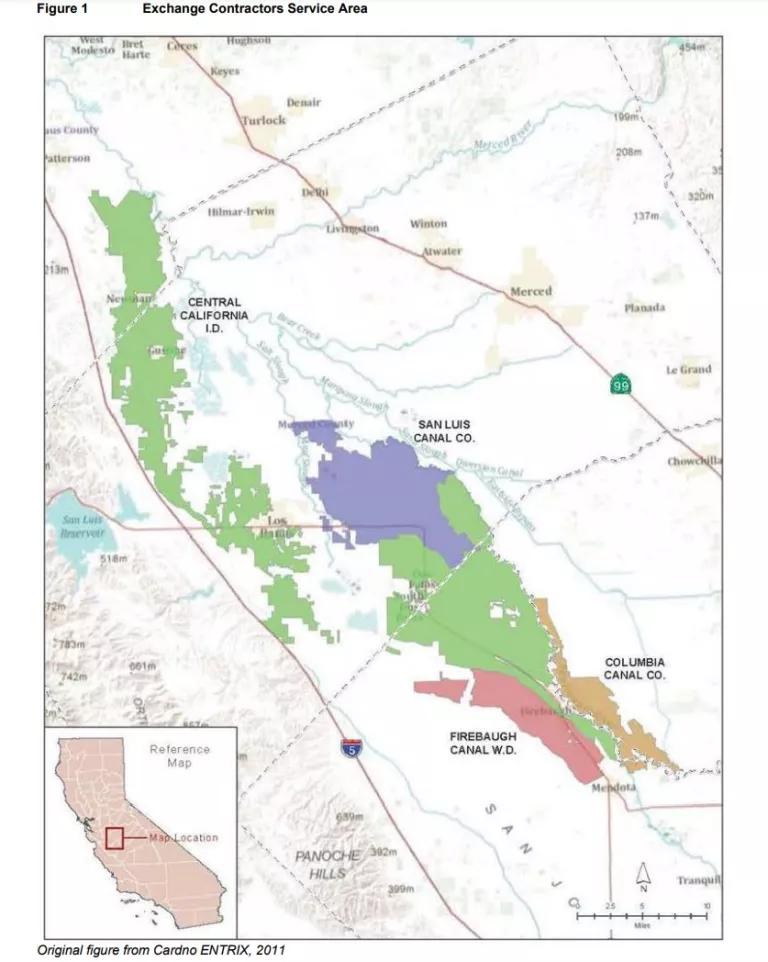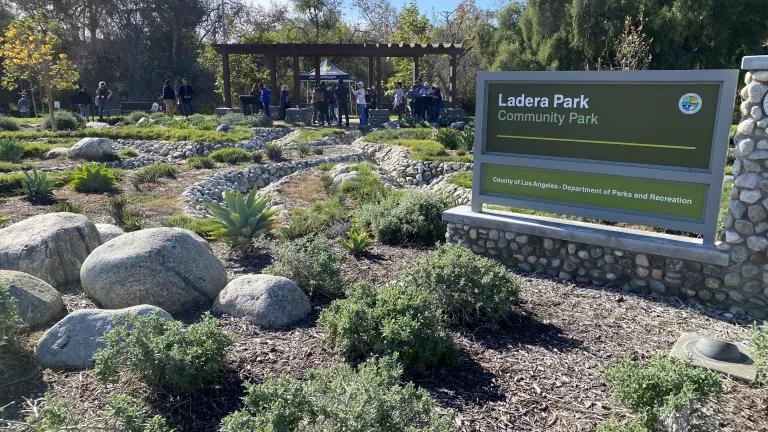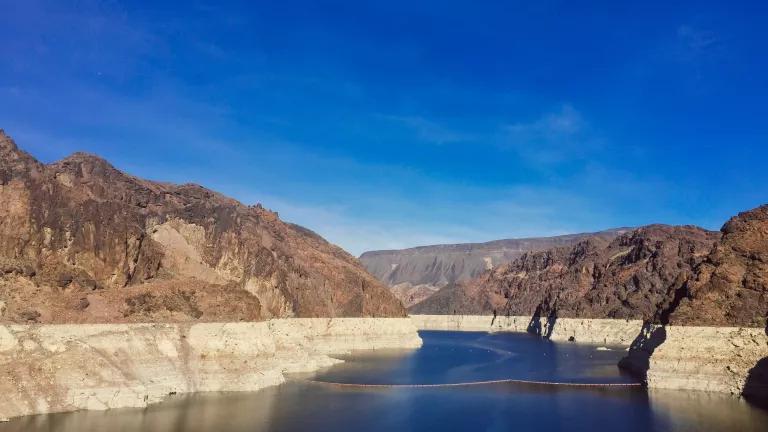CA Water Rights: An Unfair Foundation Yields Unfair Results
The inequity of this system has not diminished since the time it emerged—but rather, is glaringly apparent in times of drought.

California’s system of water rights is undeniably built on a violent and racist foundation. The most valuable “senior” water rights with the highest claim of priority were snatched up by white European immigrants in the late 19th and early 20th century, while Native Americans, blacks, Asians, and other people of color were systematically excluded from laying claim to water rights during the era when priority status was established. This shameful history manifests today in unfair allocation of water in California, and will continue to do so until water rights are reformed.
Sadly, the inequity of this system has not diminished with time but is glaringly apparent in drought years like this one. Fairness, it seems, would dictate that everyone needs to cut back when water is short, with human health needs like water for drinking and bathing to be met first before less essential needs like landscaping and irrigation. But that is basically the opposite of how our system of water rights operates.
Consider the communities in California’s San Joaquin Valley.
Communities with no water at all
On the one hand, we have what the Nation describes as colonias:
Unincorporated communities that are home to some of the Valley’s poorest residents. These communities are overwhelmingly the products of a long history of racism and housing discrimination. And the legacy of racial exclusion that led to their existence, far from being safely buried in the past, continues to manifest itself in daily life. Every time a resident of a colonia goes to a faucet for a drink, the contaminated water that emerges—if any water comes out at all—is a living reminder of that history.
Many of these communities rely on private drinking water wells, and many of them have no water supply at all during droughts. The community of Teviston went without running water for a month in the summer of 2021. Outside Sanger, three wells went dry. According to data from the Department of Water Resources, 973 residential wells statewide went dry in 2021, and more than 70 percent of those are in the San Joaquin Valley. Why? Because unsustainable groundwater pumping by agribusinesses has drawn down the groundwater levels, leaving the drinking water wells serving these disadvantaged communities high and dry. The trend continues this year, as this State database of locally-reported dry wells shows that the vast majority of wells reported dry in the last month (shown in red) are occurring in the San Joaquin Valley:
Industrial farms with inherited water rights receive more water than Los Angeles and San Francisco combined.
Meanwhile, a group of farmers called the Exchange Contractors, whose wealth is built on “senior” water rights obtained under the violent and racist period of post-Gold Rush California, are receiving 650,000 acre-feet of water to irrigate their fields this summer, more water than the cities of Los Angeles and San Francisco together use in a year. The Exchange Contractors are located in the San Joaquin Valley, close by many of these communities with no drinking water. They are not paying more for water – indeed, this year they get their water at some of the lowest, bargain basement prices in the State at $20/acre-foot, while other farmers are buying water on the open market for $2,000 per acre foot.
The name “Exchange Contractors” refers to the fact that in 1968, these districts exchanged their water rights (which entitled them to divert water from the San Joaquin River) for a sweetheart contract with the U.S. Bureau of Reclamation (which generally delivers water from the Delta to these contractors). As a result, in many dry years these contractors get more water under this contract than they would under their water rights – like they did in 2021, when they got more water than the entire flow of the San Joaquin River in some months. Thankfully, the Biden Administration has a chance to reform this contract, as Article 13 of the contract provides that later this year (and every 5 years), the United States can submit written notice of intent to renegotiate this contract.

The reason that the Exchange Contractors get so much water, on the cheap, even when their neighbors lack any water for essential services like drinking and bathing, is because this select group of contractors inherited the water rights grabbed by Henry Miller and Charles Lux at the height of California’s colonial era. Miller and Lux came to California during the Gold Rush and bought, confiscated, and gained title in dubious ways to millions of acres of grazing land between 1858 and 1870, at one point owning more than 22,000 square miles of land in California, Nevada, and Oregon. But as Governor Newsom recognized in September 22, 2020, when he signed “A Statement of Administration Policy on Native American Ancestral Lands”, Native Americans occupied California long before Miller and Lux arrived in California and were forced by violence and genocidal tactics to relinquish their lands and sacred sites to the newcomers descending upon the state. Much of the land seized by Miller and Lux that now lies within the boundaries of the Exchange Contractors’ service area was historically inhabited by the Northern and Southern Valley Yokuts.

We do not have to accept this shameful state of affairs that perpetuates these historical injustices today. As I explained in previous posts, California has the laws on the books to reform our water rights system to reflect current priorities and to protect the public good. But it requires the Newsom administration and Biden administration to enforce those laws, reform unsustainable water contracts, and to stand up to powerful entrenched interests. This year, the State and Feds have forced the Sacramento River Settlement Contractors, who also claim senior water rights, to accept far less water than their contract provides (equivalent to an 18% allocation), but have continued to provide the Exchange Contractors with a 75% allocation. With the number of dry wells estimated to exceed 3,600 in California this year, and everyone but the a select few “senior” water rights holders being asked to do their part to reduce water use, perhaps now is the time that the Governor and the Biden administration will stand up those interests and right this ongoing wrong.



